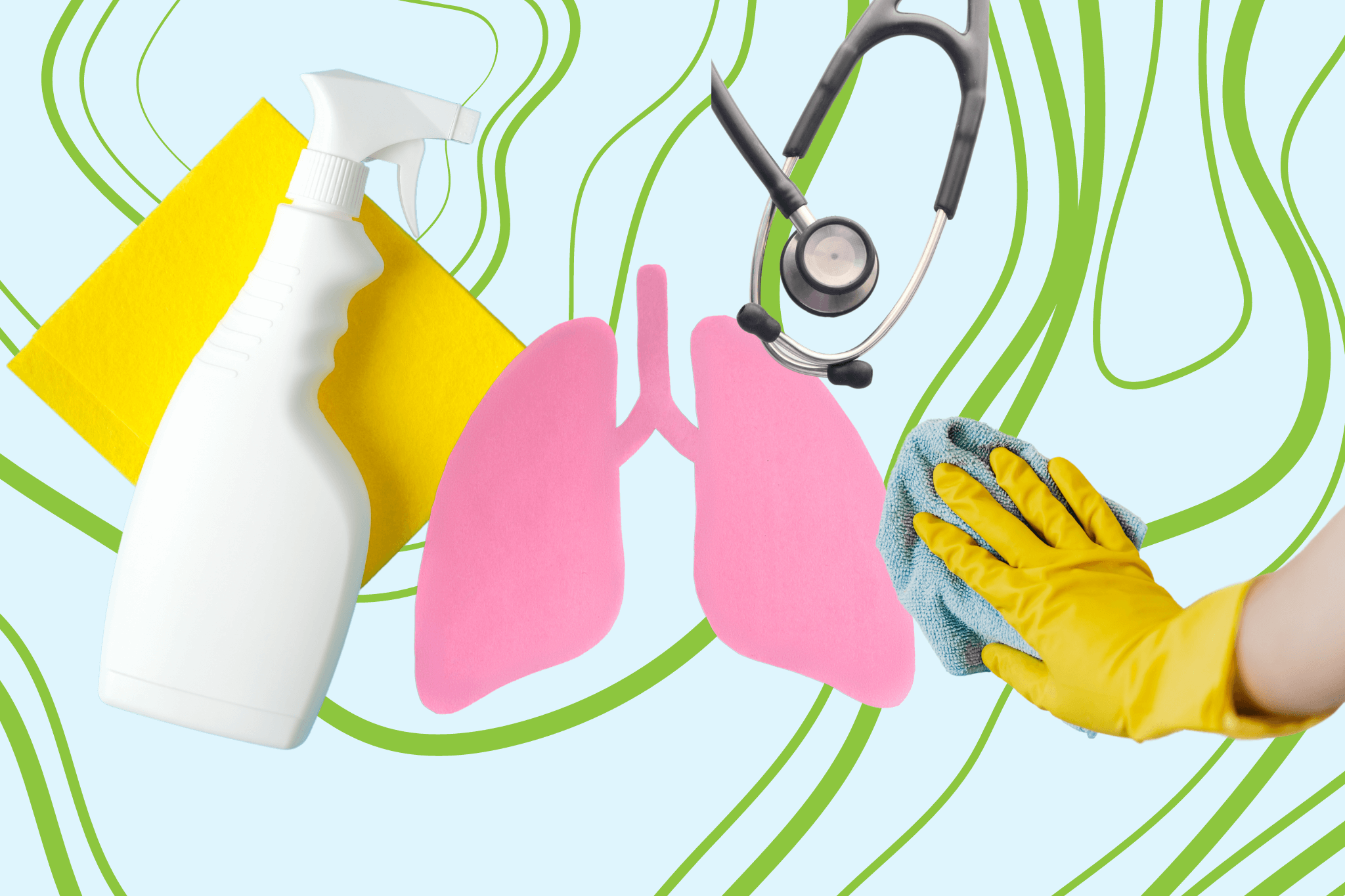Did you know that everyday-use cleaning products in your home contribute to indoor air pollution? As a result, these common household products affect the health of you and your family. Cleaning products, and the air pollutants they produce, are often unregulated. This is a serious issue that should have consumers up in arms—especially when considering the potential health risks. VOC emissions from household products are an important indoor source to tackle in your space.
VOCs Are Air Pollutants
According to Science Direct, air pollutants “are airborne substances (either solids, liquids or gases) that occur in concentrations high enough to threaten the health of people and animals, to harm vegetation and structures, or to toxify a given environment.” Common air pollutants include lead, ground-level ozone, particulate matter, carbon monoxide, sulfur oxides and nitrogen oxides. Volatile organic compounds (VOCs) are simply another common air pollutant.
VOCs are gases emitted from certain solids and liquids. As a gaseous pollutant, they are invisible, sometimes odorless and frequently ignored by homeowners. VOCs include a variety of recognizable chemicals such as benzene, ethylene glycol, formaldehyde, methylene chloride and tetrachloroethylene.
Household Cleaning Products and Air Pollutants
There are several household products that contribute to indoor air pollution, such as pesticides and building materials. In addition, common frequently-used cleaning products are a significant VOC source. Let’s take a look at some of the most common household cleaning products and the VOCs they produce. And yes, you’ll find that a majority of household products contribute to indoor air pollution.
| Cleaning Products | VOCs |
|---|---|
| Furniture and Floor Polishes | Acetone |
| Upholstery and Carpet Cleaners | Particulate Matter, Xylene, Tripolyphosphate |
| Disinfectants and Sanitizers | Isopropyl Alcohol |
| Aerosols | Methylene Chloride, Toluene, 2-Butoxyethanol, Ethylbenzene, Tetrachloroethylene, Camphene and Limonene |
| Chlorine Bleach | Chloroform, Methyl Chloroform |
| Dishwasher Liquids | Triclosan, Formaldehyde |
How VOCs Impact Human Health
Air pollutants like VOCs can have mild, moderate and severe effects on human health. It depends on the length of exposure, precisely what chemicals or products are used and if one has pre-existing health conditions.
In fact, common household products and the subsequent VOC exposure may be responsible for 340,000 to 900,000 premature deaths each year, according to a recent study.
Cleaning supplies, in particular, emit particle-forming VOCs that contribute to PM2.5 production. In other words, these VOCs mutate and stick together to create anthropogenic secondary organic aerosols (ASOAs). Prolonged exposure to PM2.5 is linked to reduced lung function, lung cancer and an increased risk of death from cardiovascular disease.
Common symptoms as a result of exposure to air pollutants include:
Acute
- Eye, nose and throat irritation
- Coughing
- Headaches
- Nausea and vomiting
- Increase in allergy and asthma symptoms
- Fatigue
Chronic
- Liver and kidney damage
- Damage to the reproductive, respiratory and central nervous systems
- Cancer
- Premature death
Controlling VOCs Indoors
There are a million and one household products on the market today. In order to protect your family’s health and limit indoor air pollution, you must choose wisely! A clean home is not worth the risk of headaches, kidney damage or premature death. A clean home must also be a healthy home. Opting for non-toxic products and storing chemicals carefully are helpful source control steps. Furthermore, it’s important that consumers unite to challenge these products’ limited regulation and the air pollutants they emit.
 Source Control: We offer several helpful source control and ventilation tips to limit volatile organic compounds’ power in your indoor space. Learn more about how to reduce off-gassing chemicals and VOC emissions in your home →
Source Control: We offer several helpful source control and ventilation tips to limit volatile organic compounds’ power in your indoor space. Learn more about how to reduce off-gassing chemicals and VOC emissions in your home →And in addition to these source control and advocacy steps, limiting VOCs from household products in your home is possible with IAQ solutions. Upgrading your home filtration system to include a secondary gas-phase filter that targets VOCs or installing a whole-home active air purifier are wildly efficient solutions to consider.



